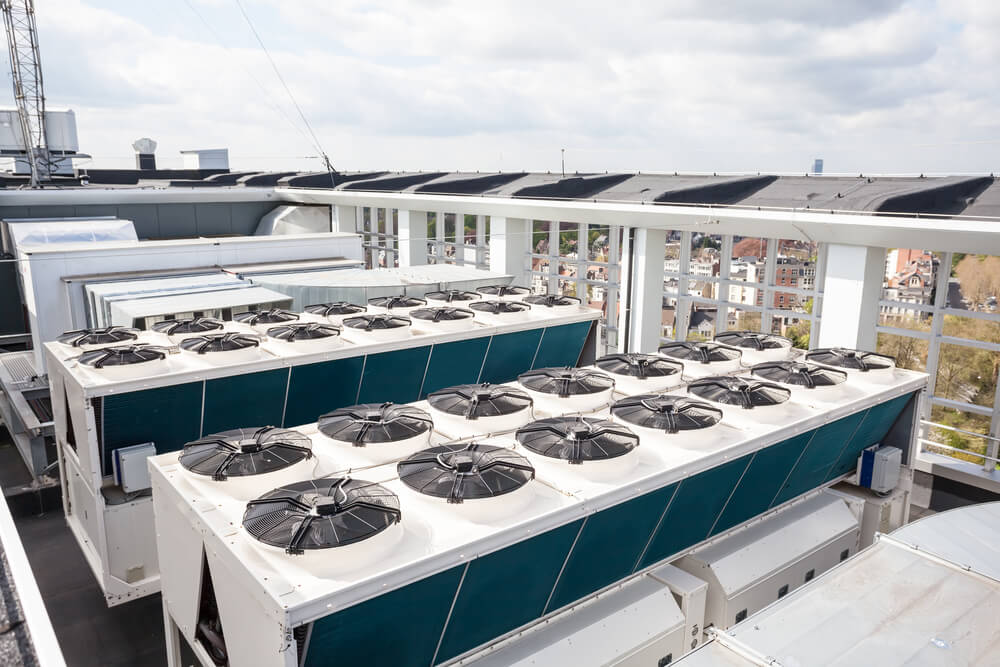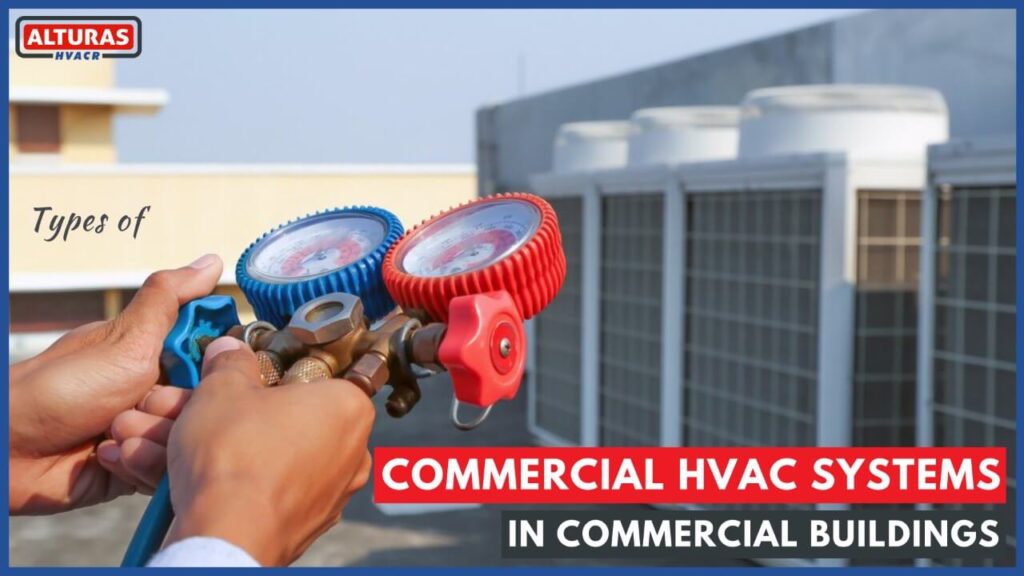You always have to make sure that the HVAC system at your business or in your commercial building is best in its shape, it will help in making sure that all your employees, tenants, and customers are comfortable and also protects your business’s bottom line. In case your HVAC system shows signs of ineffective or improper operation, or it is simply aging and nearing the end of its lifetime, you will have to move even more quickly to cure the entire situation, depending on different types of HVAC Systems for Commercial buildings.
Possibly all these repairs or extensive maintenance will hold you for a while, but a system replacement could be a better option, whether you like it or not. Alturas HVAC Contractors Los Angeles has served the commercial HVAC needs and we are all ready to help your business make the best decision if you need to invest in a new HVAC system.
The air conditioning needs of commercial properties are very much varied as compared to residential installations, and Alturas Contractors is always there to help you in this regard. Whether your company needs a single-split system, VRF, heat pump, or multi-split package, we have experience in the installation of all types of commercial cooling systems.
Based upon different industries below, type and design of HVAC system may vary.
Types of Commercial Air Conditioning Systems
Any sort of harsh hot weather tends to make heavy demands on any business’s cooling system. Commercial air conditioning that is suitable for your industrial property in any hot area could actually mean that you must plan and install any of these commercial AC units:
Single-Split System
Well, for the most modest end of commercial cooling budgets, a single-split system AC is considered ideal for any sort of cafes, shops, small offices, and related cozy spaces. As all the indoor units definitely have an exterior unit, so as your office expands, you will have to add additional cooling capacity in a one-to-one ratio.
Multi-Split System
On the other hand, multiple indoor units would connect to single and even larger outdoor units. Any larger office spaces, diners, doctors’ offices as well as retail shops might be seen using the multi-split systems. Any of the interior spaces that have many walls or multiple floors are often best operated with the help of multi-split AC.
Window Air Conditioning System
Window air conditioning units are self-contained systems installed in windows to cool individual rooms. These units are ideal for smaller spaces, such as offices, retail shops, diners, and server rooms. The design allows for easy installation and cost-effective cooling without the need for extensive ductwork.
VRF or VRV System
VRF is the abbreviation of variable refrigerant flow (VRF) or variable refrigerant volume (VRV) this system is actually a heat pump that uses refrigerant in the heating and cooling lines. There is more than one evaporator that connects to a single condensing unit.
VAV or CAV System
Variable air volume (VAV) or constant air volume (CAV) systems actually uses a single-duct supply and return setup that has adjusting airflow (VAV) or constant airflow (CAV) to keep temperatures at set points.
Different Types of HVAC Systems for Commercial Buildings

Here are different types of HVAC systems for commercial buildings, each designed to meet specific heating, cooling, and ventilation needs:
1. Rooftop Units (RTUs)
- Description: Packaged systems installed on the roof that combine heating, cooling, and ventilation.
- Applications: Ideal for larger commercial buildings, warehouses, and retail spaces.
- Advantages: Space-saving, easy to install, and maintenance can be performed from the roof.
2. Chilled Water Systems
- Description: Centralized systems that use chilled water to cool air in the building.
- Components: Typically includes chillers, cooling towers, pumps, and air handling units.
- Applications: Suitable for large buildings or campuses requiring extensive cooling.
- Advantages: Energy-efficient and provides consistent cooling across large areas.
3. Variable Refrigerant Flow (VRF) Systems
- Description: Advanced systems that use refrigerant to provide both heating and cooling.
- Features: Allows for simultaneous heating and cooling in different zones.
- Applications: Ideal for multi-zone buildings, hotels, and office spaces.
- Advantages: Highly energy-efficient and offers precise control over temperatures.
4. Split Systems
- Description: Comprise an outdoor unit (compressor) and one or more indoor units (evaporators).
- Applications: Commonly used in medium-sized commercial buildings.
- Advantages: Flexible installation options and good for zoning.
5. Packaged Units
- Description: All-in-one systems that house heating and cooling components in a single unit.
- Applications: Often used in smaller commercial buildings without basement space.
- Advantages: Easy to install and requires minimal space.
6. Ductless Mini-Split Systems
- Description: Consist of an outdoor compressor and multiple indoor air handlers without ductwork.
- Applications: Great for retrofitting older buildings or spaces without existing ducts.
- Advantages: Provides individual temperature control for each zone.
7. Hydronic Systems
- Description: Use water as the heat transfer medium, usually with boilers and radiators or fan coil units.
- Applications: Suitable for larger buildings that require consistent heating.
- Advantages: Highly efficient and comfortable heating with minimal noise.
8. Geothermal Systems
- Description: Utilize the earth’s stable underground temperature for heating and cooling.
- Applications: Suitable for both new constructions and retrofits.
- Advantages: Extremely energy-efficient but requires significant initial investment.
9. Heat Pumps
- Description: Systems that can provide both heating and cooling by reversing the refrigeration cycle.
- Applications: Used in various commercial applications, including offices and retail spaces.
- Advantages: Energy-efficient and can significantly lower energy bills.
10. Makeup Air Units (MAUs)
- Description: Introduce fresh outdoor air into the building to ensure proper ventilation.
- Applications: Often used in conjunction with other HVAC systems.
- Advantages: Improves indoor air quality and ensures compliance with ventilation requirements.
11. Integrated HVAC Systems
- Description: Systems that combine heating, cooling, and ventilation in a single network.
- Applications: Used in modern commercial buildings for optimal energy efficiency.
- Advantages: Streamlines operations and enhances control over the building environment.
12. Energy Recovery Ventilators (ERVs)
- Description: Systems that recover energy from exhaust air and use it to pre-condition incoming fresh air.
- Applications: Ideal for buildings requiring enhanced ventilation and energy efficiency.
- Advantages: Improves indoor air quality while reducing energy costs.
13. Centralized vs. Decentralized Systems
- Centralized Systems: Have a single HVAC unit servicing the entire building.
- Decentralized Systems: Use multiple smaller units for different zones or areas within the building.
Each type of HVAC system offers unique benefits and is chosen based on factors such as building size, layout, climate, and specific heating and cooling requirements. Selecting the appropriate system is crucial for optimizing energy efficiency, maintaining indoor air quality, and ensuring occupant comfort.













